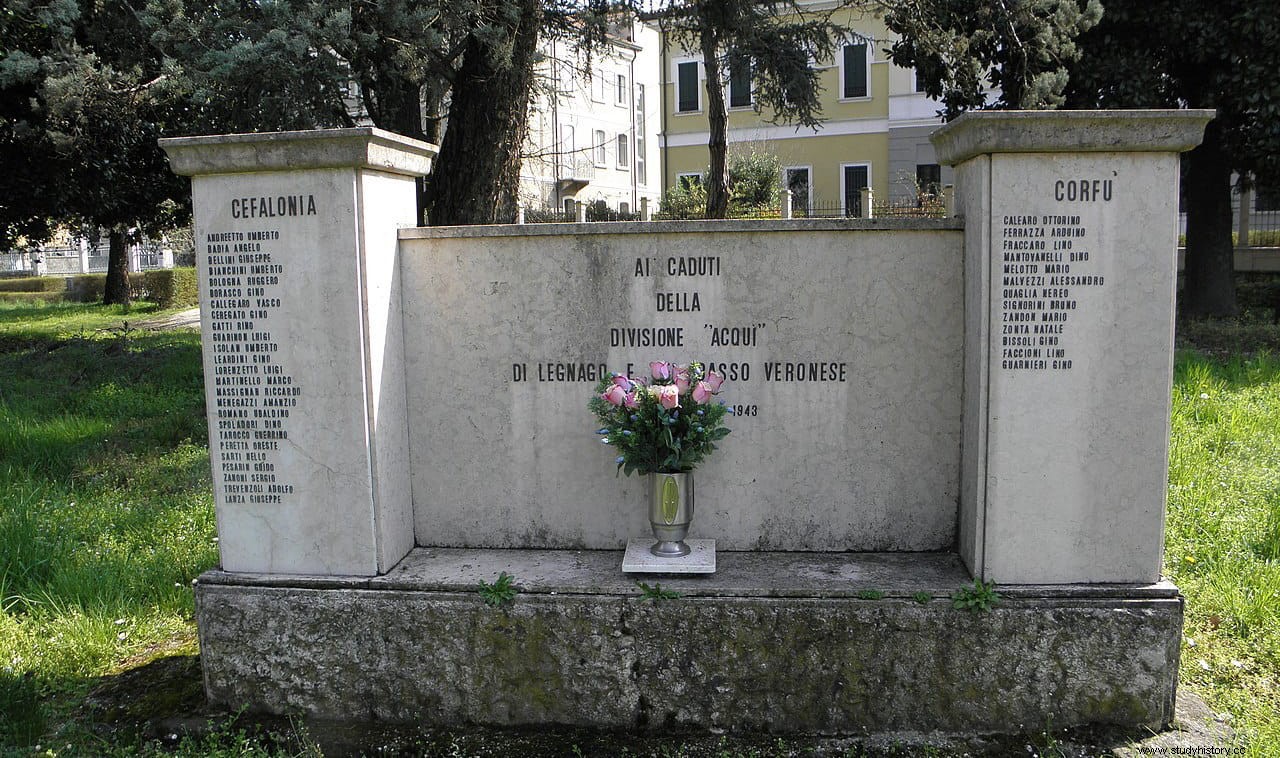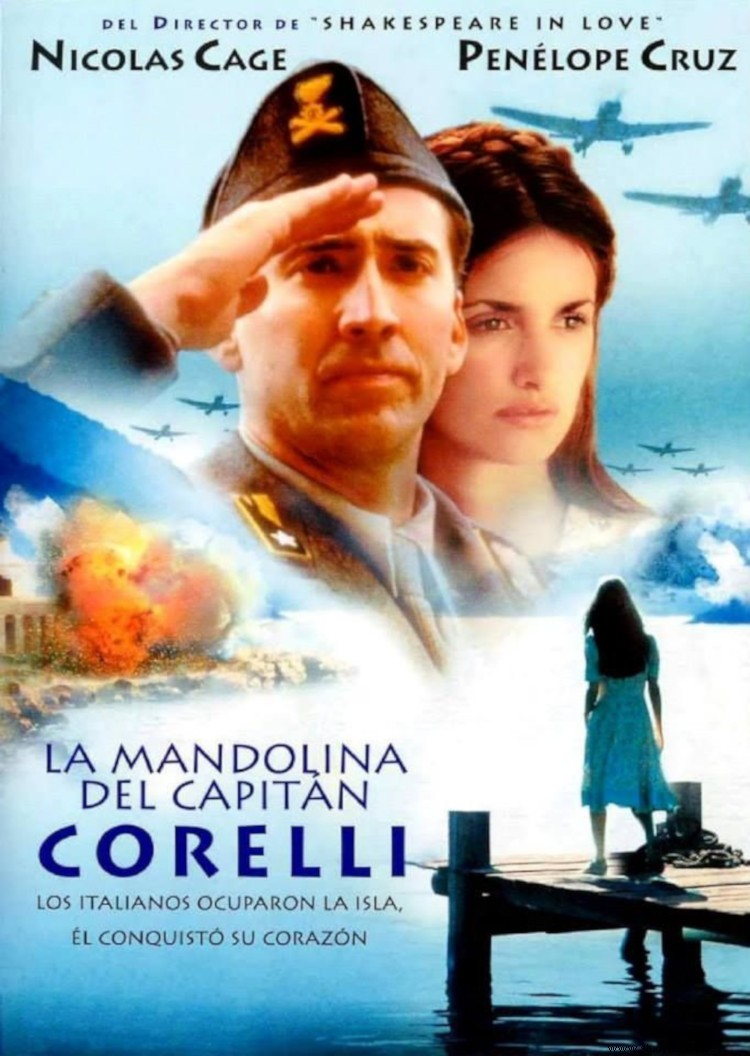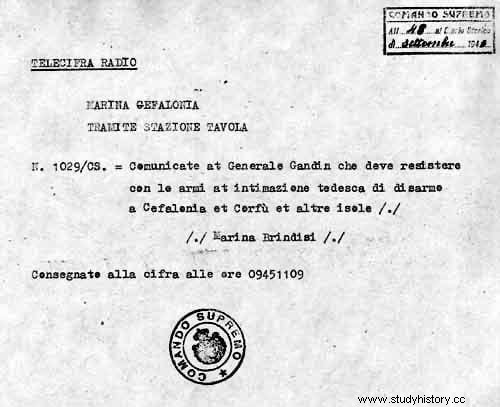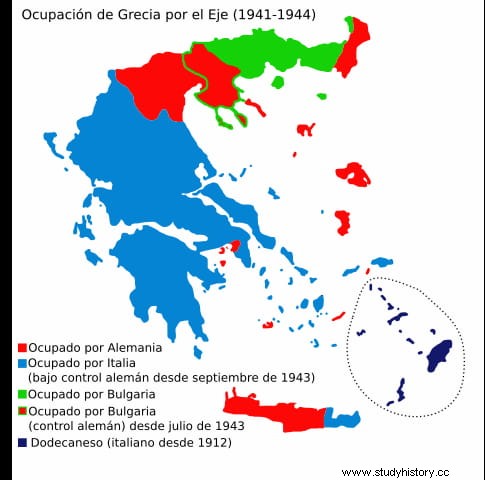One of the first movies that Penelope Cruz made in Hollywood was Captain Corelli's Mandolin , a loose adaptation of the novel by the British writer Louis de Bernieres.
In it she played (although she was nominated for the Razzie Award for Worst Actress) the role of a young Greek woman from Kefalonia who is torn between the love of a fisherman and that of an Italian officer from the detachment occupying the island.
We are not concerned here with the argument but with the context, because those Italian soldiers who seemed to enjoy an almost paradisiacal destiny ended up exterminated in cold blood at the hands of their own allies, the Nazis, in one of the darkest episodes of World War II:the so-called Kefalonia Massacre .
Greece it had been invaded by the Axis in the spring of 1941, dividing its territory between Germans and Italians but the latter occupying most of it, to which they allocated 170,000 troops.

To control Kefalonia, an island of the Heptanese located in the Ionian Sea (south of the Adriatic), the 33rd Acqui Division was sent , 11,500 men and 525 officers framed in the 17th and 317th infantry regiments, the 33rd artillery, the 27th Blackshirt Legion, the 19th Battalion of the same body and other minor support units.
The defense of the island also had coastal batteries, a couple of planes and several torpedo boats, all under the command of General Antonio Gandin , a fifty-two-year-old veteran who had fought on the Russian front earning the Iron Cross.
The real problems came in September 1943, when Italy capitulated before the Allies signing what is known as the Armistizio di Cassibile or Armistice of the 8th September :Before the advance of the enemy through the peninsula, where he had jumped from Sicily, King Victor Emmanuel III organized the arrest of Mussolini and his replacement at the head of the government by General Pietro Badoglio , although it was another commander, Enzo Castellano, who carried out the surrender negotiations.

Since the Germans knew about it, they had sent troops to Cephalonia that summer:the grenadier battalions 810th and 909th, which included tanks and self-propelled guns, adding a total of two thousand men under the command of Lieutenant Colonel Johannes Barge .
So General Gandin had to make a serious decision:let the Germans disarm them and take over the island -as was already happening in other places in Greece- or refuse and face whatever happens.
The orders of his superior, Carlo Vecchiarelli (General-in-Chief of the Italian Army in Greece) were not very specific:to avoid confrontation with his former allies and not to collaborate with the Greek partisans, but to respond to any aggression.
Gandin no longer had ships to evacuate because he had had to send them to Italy under the terms of the armistice. In the following days he met with Barge to discuss the situation, which did not seem to present a major problem given that the Italian was a recognized Germanophile and, in fact, that was why he had been chosen for that position.

However, on the 11th he was ordered to consider the Teutons as enemies and not hand over their weapons . Barge considered that, following the directives of Badoglio himself, the Italian forces were subservient to the German ones, but Gandin obeyed Vecchiarelli and refused to disarm his people, ignoring the ultimatum sent by the Teuton.
And so, although apparently most of the troops were in favor of not fighting, on September 15 a battle began between the former allies , with the stukas of the Luftwaffe bombing Italian positions and throwing leaflets at them urging them to lay down their arms.
At first Gandin imposed his numerical superiority and took hundreds of prisoners, but two days later the two battalions of the Mountain Division (Division Gebirgs) of Harald von Hirschfeld landed on the island. , an elite body that already had some renown for its brutal crackdown on the Greek civilian population of Kommeno in August.
It also arrived, reinforced by a third battalion of the Jäger Division . Gandin's pleas for help were not heeded despite the fact that quite close, in Lecce, there was an airfield; the Allied command could not afford the risk of those 300 planes defecting and the same was true of some torpedo boats sailing towards Kefalonia who were ordered to turn back.
In this way, the Germans made up for their numerical inferiority with air dominance and combat experience. Only some troops of the ELAS (Greek Liberation Army) joined the Italians but to no avail. On September 22 Gandin ran out of ammunition and had to surrender; he had had 1,351 casualties compared to 300 Germans. But the worst was yet to come.
Before Gandin relented, the Germans had already begun summaryly executing prisoners , for treason, following Hitler's orders to that effect. Initially they were machine-gunned in the same place and moment of capture but, apparently, several Bavarian soldiers protested and although they themselves were threatened, the system was changed, locking the prisoners in the town hall and shooting them in small groups.
Gandin and 137 of his officers they also died after undergoing a quick court-martial in just two days; only 37 were saved. The platoons continued their sinister work until adding 5,155 dead, one of the largest massacres of the Wehrmacht (there were no SS units in Kefalonia).
The corpses, after being stripped of their equipment and boots, were incinerated in great pyres that spread the smell of burning meat throughout the island; In some cases, such as Gandin's and his officers, they were shipped and thrown into the high seas, which is why their remains were never recovered.
In the village of Frangata, the machine guns were firing for nearly a couple of hours, watering the streets, gardens, walls and even the interior of the houses with blood, as some neighbors had taken in the wounded Italians.
These were sometimes attended by some German soldiers but then others came to finish them off. Two important testimonies of the massacres are preserved. One, from chaplain Romualdo Format , who compared the massacre to the persecution of early Christians in Roman times, telling how soldiers used to await death by singing, praying and remembering their families; He also noted that those who could prove that they originated from the Tyrol, a region annexed by Hitler, were pardoned.
The other testimony corresponded to an Austrian soldier named Alfred Richter , who explained that the companions of his nationality felt both disgust and impotence in the face of that savage annihilation.
Kefalonia was littered with corpses as residents were forbidden to bury them. But it was not an isolated case because similar situations, although not of such proportions, were repeated on other islands such as Corfu (where another part of the division was and the Teutons executed 280 officers) or Kos (90 officers).

The following month, after Mussolini was freed by a paratroop commando, the executions stopped, offering the Italians to stay on the island doing forced labor or to be transferred to Germany to a concentration camp .
The majority, some 3,000, opted for that second option but a curse seemed to cruelly fall on the Acqui Division, since the ships Sinfra and Ardenine , in which they were transferred, were sunk in the Adriatic and all died .
The information of what happened reached the Duce in January and, even though he despised the Acqui Division for his betrayal, he flew into a rage; It seems that he was later proud of the heroic behavior of his soldiers.
Harald von Hirschfeld became the youngest general in the Wehrmacht and died fighting the Soviets in Poland in 1945. his superior, Hubert Lanz , responsible for the deaths in Corfu and the Kommeno massacre, was tried in Nuremberg and sentenced to only 12 years in prison as it was not clear whether the ultimate responsibility was his and due to the doubts that some colleagues planted about the exact veracity of the facts; he was released in 1951 and passed away in 1982.
As for Johannes Barge , he had nothing to do with the facts because he was absent; he later fought on Crete and won the Iron Cross, dying in 2000.
In the fifties thousands of bodies were exhumed to take them to Italy, to the Bari War Cemetery but the subject remained ignored until 1980, when a monument was erected in Cephalonia in memory of the fallen. Later, the aforementioned novel published in 1994 and, above all, its film adaptation in 2001 recovered the memory of the Acqui Division.
